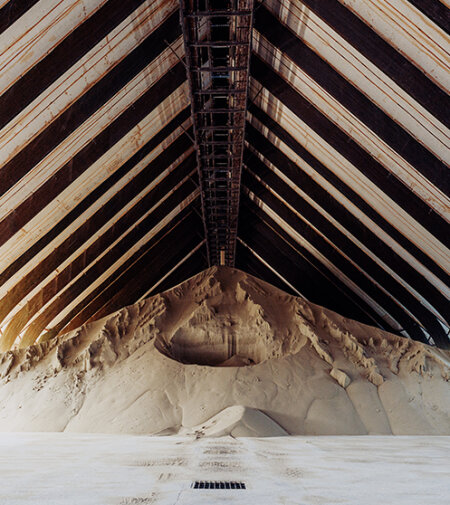Respective flowmeters (SUPELCO) managed the flowrates of NH3 and CO2, which had been bubbled into resolution through separate sintered-glass spargers. Initially, solely CO2 was flowed to purge the system, after which NH3 was introduced and the formation of a white precipitate noticed. Unreacted gases that bubbled out of answer had been passed via dilute H2SO4 and phenolphthalein indicator to take away unreacted NH3 and stop backflow of air into the reactor.
One of methods include a reaction of ammonia, carbon monoxide and sulfur in methanol. This reaction has two steps, the first solid nitrogen temperature one incluede the formation of tone amide group whereas the second step results in the ultimate compound.
It is ready from liquid ammonia and liquid carbon dioxide and it is carried out at excessive stress and temperatures. The Bosch-Meiser process reacts ammonia and carbon dioxide, under high temperature and stress, to form ammonium carbonate which then decomposes into urea and water. Even although this was first developed in 1922, it still stays the standard method of producing urea, because of the cheap reagents used.
This permits extra one or two weeks for incorporating the urea fertilizer into the soil by rain, irrigation or other means. Once utilized, the urea fertilizer reacts with water within urea granular the soil and with urease, an enzyme that exists abundantly in soils, and goes via an hydrolysis course of, during which urea is converted into ammonium carbonate.

Urea Formula
- On treating silver cyanate with ammonium chloride resolution he obtained a white crystalline materials which proved similar to urea obtained from urine.
- Additionally, whilst agricultural urea -cross association was adequate for experimentation, the inclusion of a recycle loop would be required to realize acceptable conversion efficiencies.
- Its melting point is 134 ºC and in larger temperatures urea decomposes.
A solution of 50 percent urea by weight results in and has a salting-out temperature of 60 levels Fahrenheit. To store and deal with liquid urea during cooler temperatures, the nitrogen concentration have to urea in urine be lowered to cut back salting issues. Several possible formulations can be used for this, corresponding to including small amounts of ammonium nitrate, ammonium sulfate or anhydrous ammonia.
The white precipitate was removed from resolution by continuous solvent filtration using a peristaltic pump (PLP 330, Behr Laboratory) linked to an inline filtration unit (Whatmann Grade 5, 2.5 μm). Separate experiments had been carried out to evaluate the filtration of carbamate from i-PrOH, as seen in the Supplementary Information. The filtrate was then returned to the reactor, forming a solvent recycle loop. After the response nitrogen rich fertilizer duration, the NH3/CO2 flows were stopped and the continuous solvent filtration run for a brief duration to remove remaining precipitate. Subsequently, the filtered solids were dried under a move of CO2 for 10 min, washed with diethyl ether, and additional dried underneath CO2 for 10 min.
A coincidental response was observed in the first scrubber temperature, which was attributed to the exothermic formation of NH4NO3 (AN), which was collected for utility as a fertilizer in subsequent development studies. Promisingly, the above conversion was in close proximity to those typically achieved by industrial reactors (reportedly between 25 and 35% per move) (Appl, 2011), regardless of the comparatively attenuated situations. However, based technical grade urea on situations at the reactor inlet, the equilibrium NH3 concentration was anticipated to be roughly 29 mol% (Appl, 2011), indicating the reaction was nonetheless removed from equilibrium. Nevertheless, the reactor design showed conversion comparable to commercial equivalents, with appreciable scope for further improvement.
Subsequently, the subsequent step towards Blue Urea is the formation of ammonium carbamate, the experimental configuration for which is illustrated in Figure 2. For expedience, the NH3 produced in the aforementioned course of was not used as a feedstock for these experiments and as an alternative a industrial cylinder of NH3 was used. Synthesis of the carbamate was conducted in an analogous urea for sale manner to Barzagli et al. by co-effervescent of NH3 and CO2 gases by way of solvent inside a glass reactor of dimensions forty mm (Di) by 500 mm (L). The reactor also contained evenly spaced baffles positioned axially alongside the reactor to increase mixing and make contact with time between the bubbles and solvent.
The dried solids have been then weighed and the conversion evaluated assuming the isolated solids had been totally composed of ammonium carbamate (Equation 7). Urea can take in water from moisturized environments, thus it is used as a dry powder. Other fascinating chemical habits is when it's dissolved in hot water, hydrolyzing into carbamate, ammonia and carbon dioxide. Additional, urea can react with alcohols and esters to kind urethanes and barbituric acids.

For occasion, resolution of the aforementioned thermal gradient ought to help the response towards equilibrium, and the addition of a recycle loop would greatly improve general efficiency. Importantly, these experiments demonstrated that manufacturing of NH3 on this system reaches regular-state within ~2 h.
























